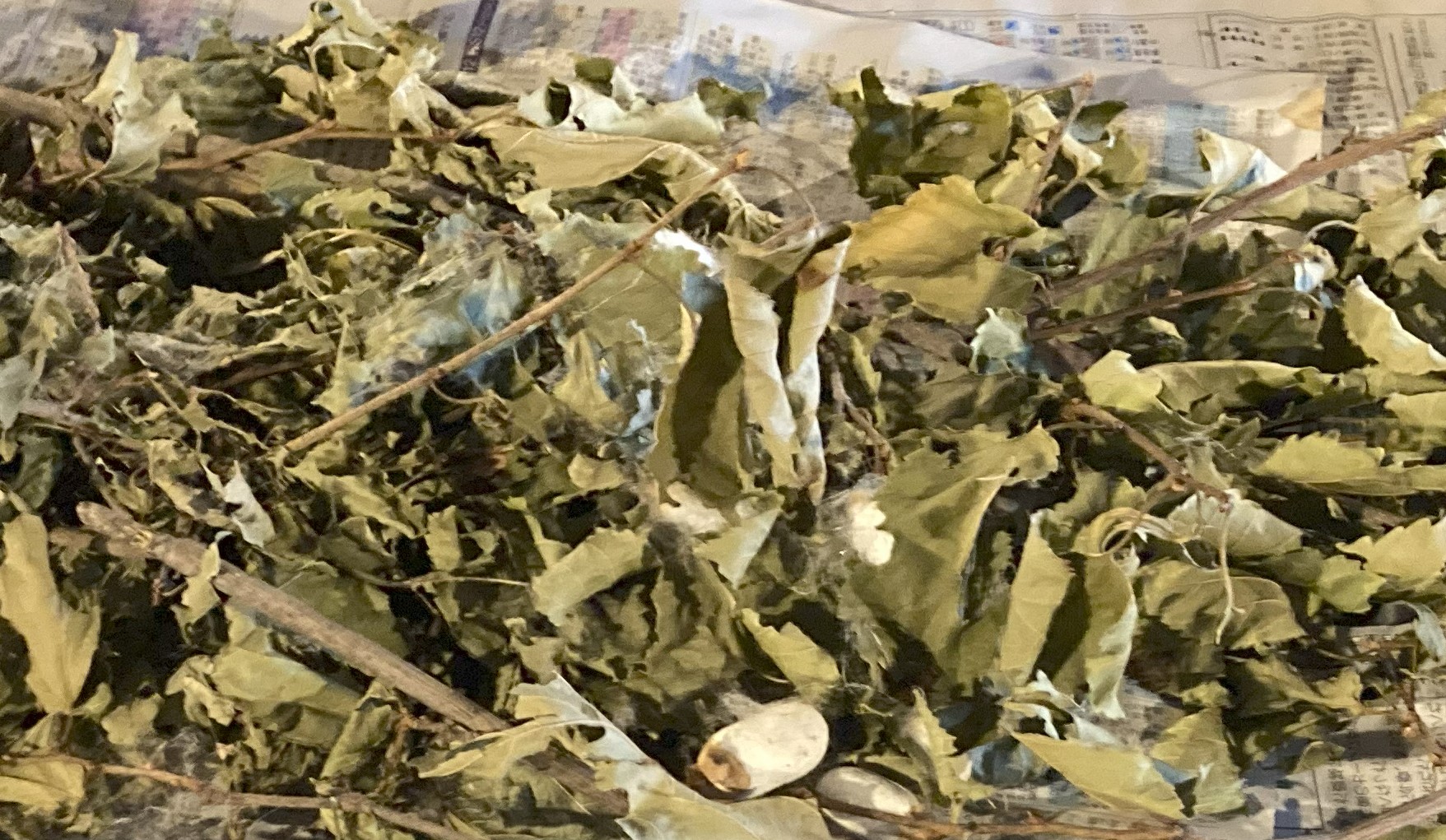本ブログは観光業、企業接待、留学生対応等で英語案内が必要ながら、多忙で準備に時間をかけられない方々の為にすぐに使える情報を分かりやすく解説しています。
今回は本編ブログ『世界遺産@白川郷わかりやすく解説』の《9 合掌造り屋根裏(養蚕の名残)>9.1 基本情報》のA級者用(日→英の対応が必要な方)向け演習《Dツール》です。
👉ショートカット&リンクについて!①最初に音声で学習されたい方はそのままお進み下さい。➁最初に原文を確認されたい方は【原文:英日】へ。③本編ブログを参照されたい方は『白川郷わかりやすく解説』へ。④音声ツールの概要を参照されたい方は『演習ツール』まで!
9 合掌造り屋根裏(養蚕の名残)
“Gassho-zukuri Attic (Remnants of Silkworm Farming)”
9.1 基本情報
本編ブログの通り、本来説明表現ではありませんが、基本情報として使える表現もありますのでツールとしてご用意しました。
Dツール:”日⇒英”演習簡易ツール
本ブログ同様、全10文は前半パート(1-5)と後半パート(6-10)の2ファイル構成になっています。また日本語だけ演習向けに(不自然にならない範囲で日英の語順を合わせる様に)編集しています。
D1:日英確認用:『日本語』”英語”対訳
👉文単位で日本語の後に英訳が續きますので、内容の確認ができます。
D2:口頭即訳用:『日本語』のみ(ポーズ間に英訳)
👉各日本語文の後はポーズになっていますので、その間に英訳できます。
D3:リピーティング用:”英語”のみ(ポーズ無し)
👉英語音声のみが(ポーズなく)続きますので復唱ができます。
D4:内容チェック用:”英語”のみ(低速版:or同通演習用)
👉英語音声(ポーズなし)を低速版で復唱or同時通訳の演習ができます。速さはいつも通り、約120wpm(約85%低速版)です。
【原文:日英】
《日本語》
- 蚕は、少ない農業収入をカバーする貴重な収入源ですが、ここではお蚕様と敬称をつけて呼び大切にされてきて、反映しているのは自然が与えるもの全てに感謝し崇敬意を払ってきた地元の精神性です。
- 生糸生産は大きく2段階に分けられます。養蚕業は蚕が卵から繭になるまで飼育され、ここではその為の道具が展示されていますが、紡績では繭から生糸が作られます。
- 約50日の短い一生の間、蚕は卵から孵化し、桑の葉を食べ、成熟して繭を作りますが、その名残を、訪問客はパネルやさまざまな道具の展示で見ることができます。
- 絹の品質は蚕の健康状態に大きく影響されるため、屋根裏は24時間注意が求められ、適切な桑の葉の量、温度、湿度を保たれましたが、蚕は非常に繊細でデリケートなんです。
- 蚕は4段階、卵、幼虫、蛹、成虫と完全変態します。4回脱皮し、繭を作ってサナギになった後、成虫になる前に繭は次の製糸業者に出荷されます。
- 繭は蒸気の熱で乾燥され、一定期間保管された後、熱湯で解かれ絹糸に生まれ変わりますが、1つの繭から約1キロメートルの糸が取れます。
- 蚕は生まれてから繭を作るまでサイズも形態もとてもドラマチックに変化するので、映画の怪獣の発想にも影響を与えました。体重の増加は約一万倍で、糸をはき出す絹糸腺は10万倍以上に成長します。
- 蚕の上に登る習性を利用して2つの特殊な道具が作られました。穴のある網は蚕が登って通り抜けられることで糞が網の下に分離され、格子状の板は蚕に上がるように誘導され小さく区切られた枠に入ってそこで繭を紡ぎ、最後には労力をかけず綺麗に繭が並びます。
- ☛後者は「まぶし」のことですが、ここでは機能だけを伝えるパターンです。
- オスの蚕がはきだす絹はメスより品質が高く、生産量も2割ほど多いのですが、階級制の武士の時代でも、メスの蚕がその不利を理由に避けられていたという記録は見当たらないようです。
- 養蚕業は衰退しましたが、多くの人が蚕の飼育を主に学校で経験していて、生々しく記憶にあるのが蚕が桑の葉を貪り食う音で小雨の音や波の音を遠くで聞くような感じです。それを聞いた後何人かの子供達は自らの食事を静かに食べました。
《英訳例》
- Silkworms, which provided valuable supplementary income to the modest farm earnings, were respectfully called ‘o-kaiko-sama’ (meaning ‘Mr./Mrs. Silkworm’), reflecting the local mentality of gratitude and reverence for everything nature provides.
- Raw silk production can be divided into two main stages: sericulture, where silkworms are raised from eggs until they form cocoons, with tools for this process displayed here, and spinning, where raw silk is extracted from the cocoons.
- During their short 50-day life, silkworms hatch from eggs, feed on mulberry leaves, and mature to form cocoons, the remnants of which visitors can see through displays of panels and various tools.
- Since the quality of silk was greatly affected by the health of silkworms, the attic required 24-hour attention to maintain the right amount of mulberry leaves, temperature, and humidity, as silkworms were extremely sensitive and delicate.
- The silkworm undergoes complete metamorphosis in four stages: egg, larva, pupa, and adult. After molting four times and forming a cocoon to become a pupa before reaching adulthood, the cocoon is shipped to the next silk manufacturer.
- After the cocoons are dried with steam heat and stored for a certain period, they are unraveled in boiling water and transformed into silk yarn, with each cocoon producing nearly one kilometer of thread.
- Silkworms undergo such dramatic changes in size and form from birth to cocoon-making that they have inspired monster designs in movies. Their weight increases by about 10,000 times, and their silk glands, which produce the silk threads, grow more than 100,000 times.
- Utilizing the silkworms’ natural tendency to climb, two special devices were invented: a net with holes that allows them to climb through, separating their droppings below, and lattice-shaped boards that encourage them to move up into small compartments to spin their cocoons, resulting in neatly aligned cocoons without manual labor.
- Male silkworms produce higher-quality silk and about 20% more than females, but there seems to be no records showing that female silkworms were avoided due to this disadvantage, even during the class-based Samurai period.
- Although the sericulture industry has declined, many people experienced raising silkworms, mainly at school, and vividly remember the sound of silkworms devouring mulberry leaves—much like the sound of light rain or distant waves. Some children even ate their meals quietly after hearing it.
《Glossaries!用語集》
生糸生産👉Raw silk production!養蚕・紡績👉sericulture&spinning!繭を形成する👉to form cocoons!50日間の短い寿命👉short 50-day life! 卵から孵る👉to hatch from eggs!桑の葉を食べる👉to feed on mulberry leaves!完全変態する👉to undergo complete metamorphosis!幼虫、蛹、成虫 👉larva, pupa, and adult!4回の脱皮後👉After molting four times! 熱湯でほぐれる👉be unraveled in boiling water!絹糸👉silk yarn!劇的な変化を遂げる👉to undergo dramatic changes !絹糸腺👉silk glands!蚕の天性👉the silkworms’ natural tendency! 糞を下に分ける separating droppings below! 繭を紡ぐ👉to spin their cocoons!整然と並んだ繭👉 neatly aligned cocoons!
御礼&後書き
お忙しい中、今回も最後までご覧いただき大変ありがとうございました。今回テーマ含め今後も定期的にブラッシュアップして参りますので、引き続きご参照のほど宜しくお願い致します。🔶Gold🔶v.3b.3c.1a


